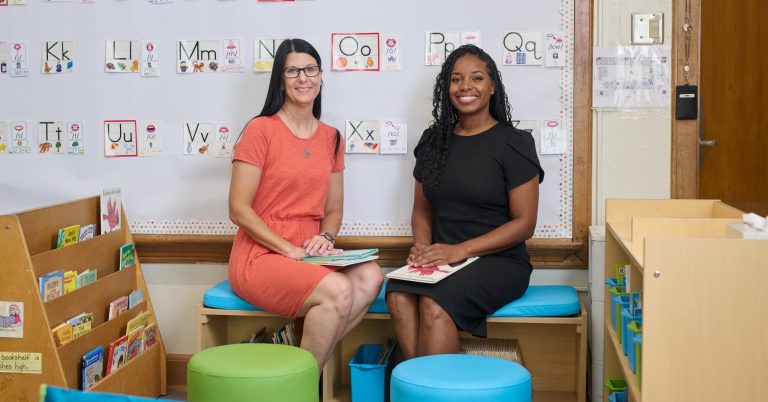For nearly three years, some Dallas ISD students needing extra support in reading have been finding that support through the district’s Reading Interventionist Program. The results have been so promising that as this new school year begins, the program is expanding to nearly every elementary campus in the district.
The program began in March 2021, with six elementary and four middle schools serving primarily African American campuses to provide equity in literacy and close learning gaps for students on those campuses. In partnership with the district’s Racial Equity Office, the district’s Multi-Tiered Systems of Support Department (MTSS) used the MAP assessment (Measure of Academic Performance) to identify students who were reading two to three grade levels behind and to capture their growth and achievement.
Starting with just 10 interventionists, and funded by ESSER (Elementary and Secondary School Emergency Relief), the program yielded results so favorable that 10 more interventionists were added, followed by an additional 16 last year specifically to support second graders.
“The results have been incredible, to say the least,” said Assistant Superintendent Roshonda Clayton-Brown. “Last school year, the reading interventionists were moved under the direction of School Leadership. With the combined efforts from Teaching and Learning, School Leadership, and the Racial Equity Office, our students saw substantial growth! When we analyzed end-of-year data, students who received services from an interventionist showed a 21-point increase in meeting their MAP-projected growth goals over students who did not. African American students receiving the services saw a 25-point increase compared to students at non-choice schools who did not receive services.”
And this year, said Clayton-Brown, “Because of the hard work of our reading interventionists and the huge impact this initiative has made on our students, our program is expanding. We have added an additional 139 reading interventionist positions to serve third-grade, tier 2 students on almost every elementary campus in the district. We know that by providing this additional support to our students, we will increase the number of students reading at or above grade level.”
Ashley Taylor is one of the veteran interventionists – a reading specialist who intervenes where there is a deficit. She works with the students who have been identified from the MAP growth report as performing at the 25th percentile or below. The students are receptive to her help, Taylor says. “They absolutely love it, because when they come to me, they know they can actually work on something that they’re capable of doing. Sometimes, in a regular classroom, they may feel a little behind because some of the skills that are being taught are things they haven’t mastered yet. They love coming to me because they feel seen. They’re learning things on their grade level, wherever they are, and so they enjoy it.”
Leslie Rocha, a first-grade teacher who works with Taylor at C.F. Carr Elementary, said, “Ms. Taylor’s intervention support was extremely impactful to not only the students she serviced but to me as well. She was always willing to support me in the classroom, offering suggestions and ways to support all students. The students she served made huge gains not only academically but in their confidence in learning.”
Marelenise M. Phillips-Roberts, the director of MTSS, said, “It’s a collaborative effort of all stakeholders on the campus and in the community. So it’s important that teachers understand the impact of what the interventionists are doing with the students. Administrators and parents are also involved, communicating about students’ progress and the importance of participating in this program.”
Said Clayton-Brown: “There’s nothing more rewarding than seeing our students’ confidence, reading fluency, and comprehension skills increase, as well as our interventionists celebrating the successes of their students and the program. Our principals recognize the impact of the work that our interventionists are doing to help students become not just good readers, but great readers.”
And as for what’s next for the program? “The sky is the limit!” Clayton-Brown said. “We will continue to provide high-quality interventions as we close instructional gaps for our students. Our students will become lifelong lovers of reading as they exceed grade-level expectations.”

